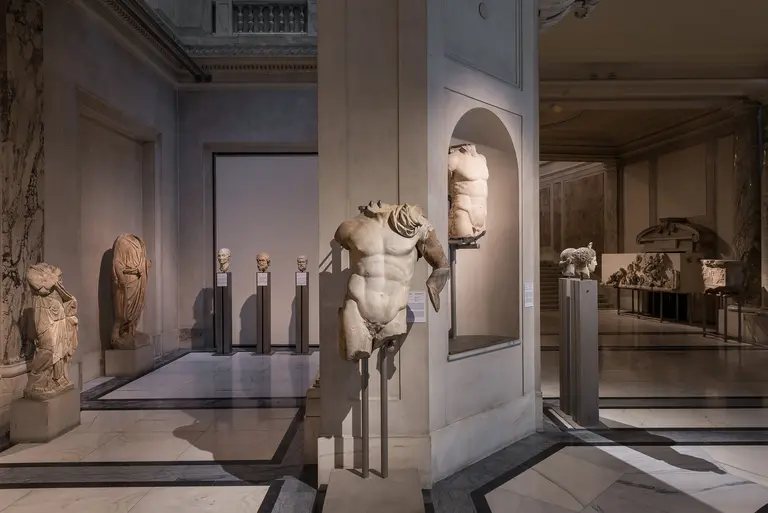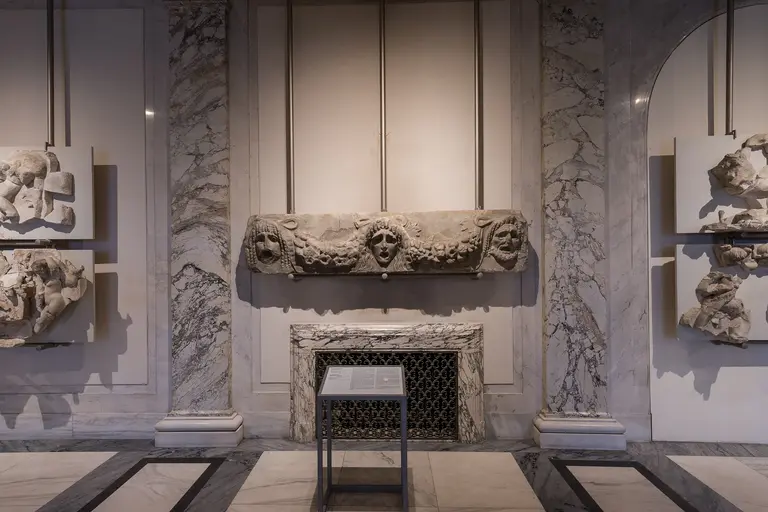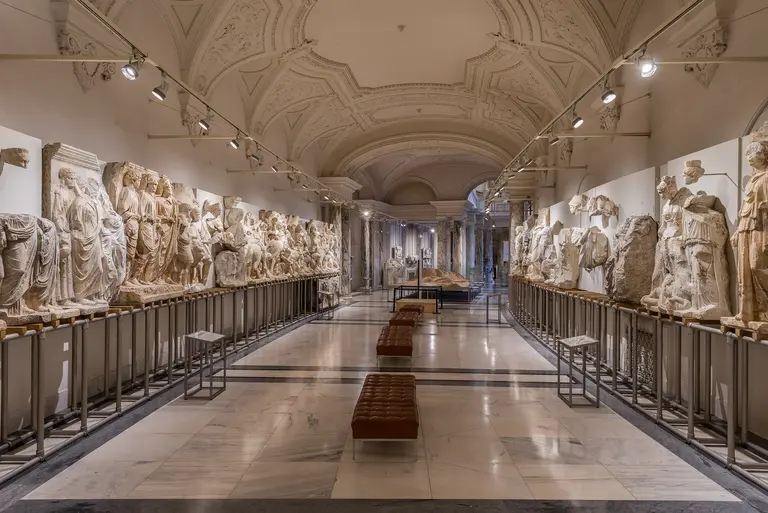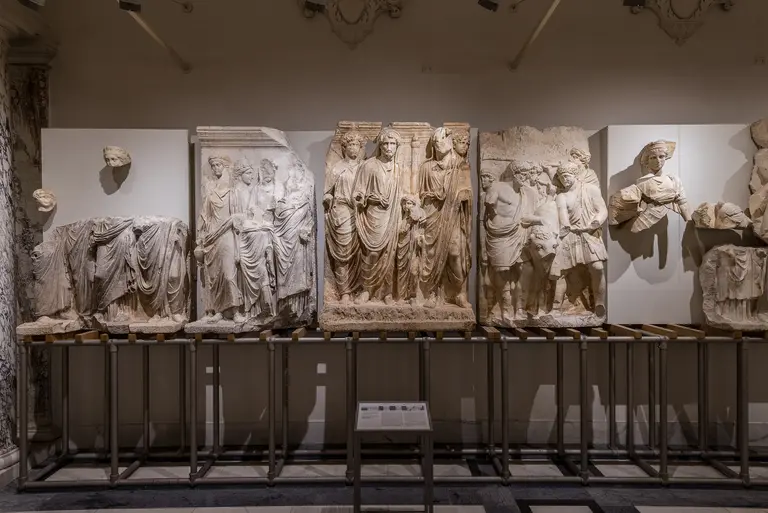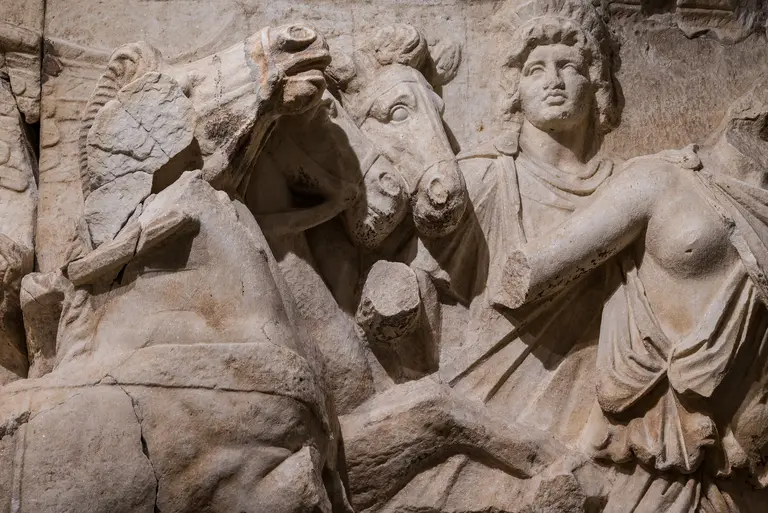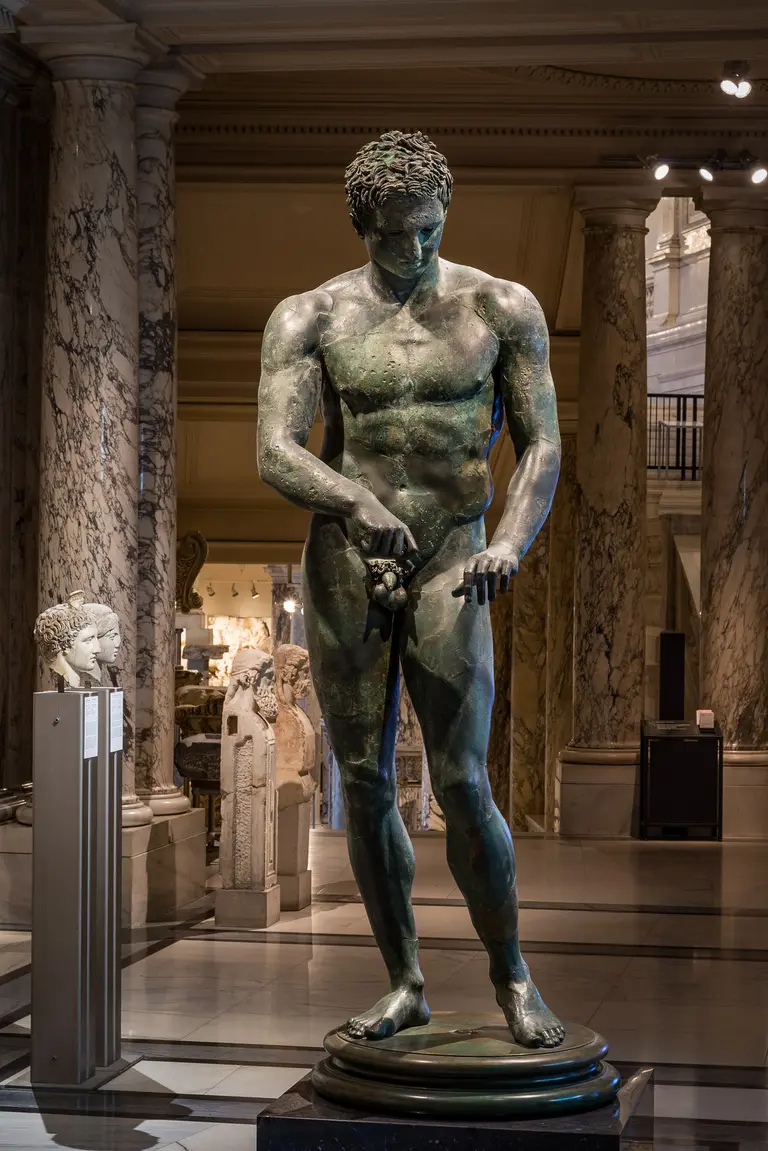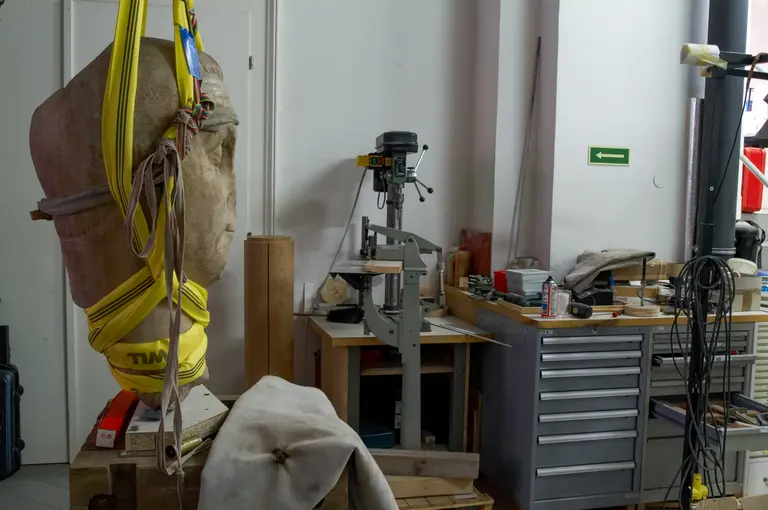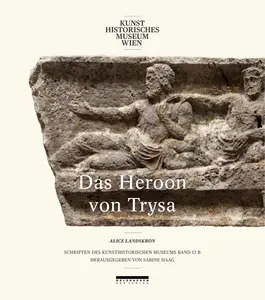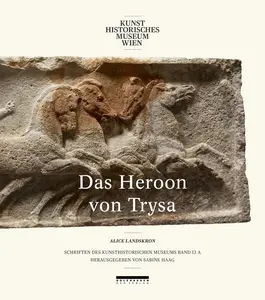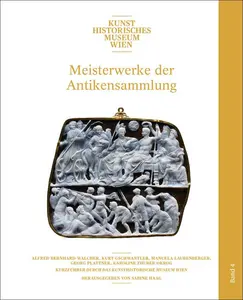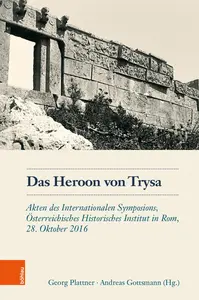
Alongside the Ephesian artefacts, the museum is also home to architectural specimens and sculptures from the Sanctuary of the Great Gods of the Mystery cult on the Greek island of Samothrace, which was explored by Austrian archaeologists in 1873 and 1875.
Since recently, a preview of the Heroon of Trysa is on display in the Ephesus Museum. The Heroon was a tomb of a Lycian sovereign who had ancient myths, heroic sagas, and scenes from his own life depicted on over 200 metres of relief friezes around 380 BCE. The funerary monument was rediscovered in 1881 and the frieze panels were acquired for the imperial collections in Vienna. A complete installation of the spectacular monument is planned for the near future.
Address
Ephesos Museum, Haus der Geschichte Österreich
Heldenplatz, 1010 Vienna
Google Maps
Visit the Ephesos Museum at the House of Austrian History (hdgö) with your annual pass or with a day ticket for the hdgö ( Opening Hours & Prices ).


